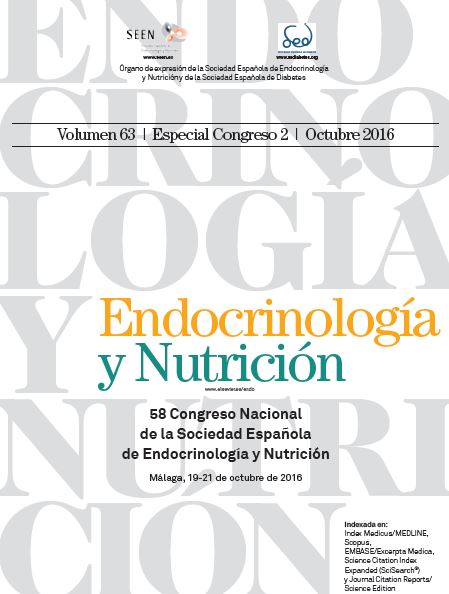298 - TRANSIENT CENTRAL HYPOGONADISM AFTER PUBERTY FAILURE
Servico de Endocrinologia. Hospital Santa Maria. Lisboa. Portugal.
Introduction: Congenital central hypogonadism generally presents as puberty delay merging with adult hypogonadism.
Case report: APMR is a male patient, aged 22. He presents at the endocrine outpatient department because of bilateral gynecomastia. He is the fourth child, of a uneventful preterm pregnancy (32 weeks) with caesarean delivery. No neonatal abnormalities were found. Puberty was delayed (14 y) and did not progress after Tanner stage 4, with bilateral gynecomastia and he still did not shave. He is above the 95th for height, with a upper/lower segment ratio < 0.9. No abnormalities of the smell sense were found. Central hypogonadism was found – FSH (RV 5-20 IU/L) – 1; LH (RV 5-20 IU/L) - 2, Total testosterone (RV 300-800 ng/dL) - 118 ng/dL, with oligoazoospermia and reduced semen volume (0.5 cc, < 20 × 106/mL) and confirmed by the LHRH test (100 μg, ev) – peak FSH/peak LH – 2/10. NMR and Pelvic ultrasonography were normal. The patient was treated with testosterone enanthate 250 mg, im every three weeks. After 4 years because of increased testicular volume, testosterone treatment was interrupted. After 5 years, the patient is clinically well with normal low testosterone – 381, and low normal sperm count (20 × 106/mL). He remains single with no children.
Discussion: Congenital isolated central hypogonadism is a uncommon condition that may depend on a multitude of genetic defects along the LHRH-FSH/LH axis. It was previously thought that these defects would result in permanent adult hypogonadism. However in up to 10% of those cases, temporary recovery may occur mainly after testosterone treatment. This seems to be the case of this non syndromic patient. Measures to preserve later fertility must be defined in these cases.





